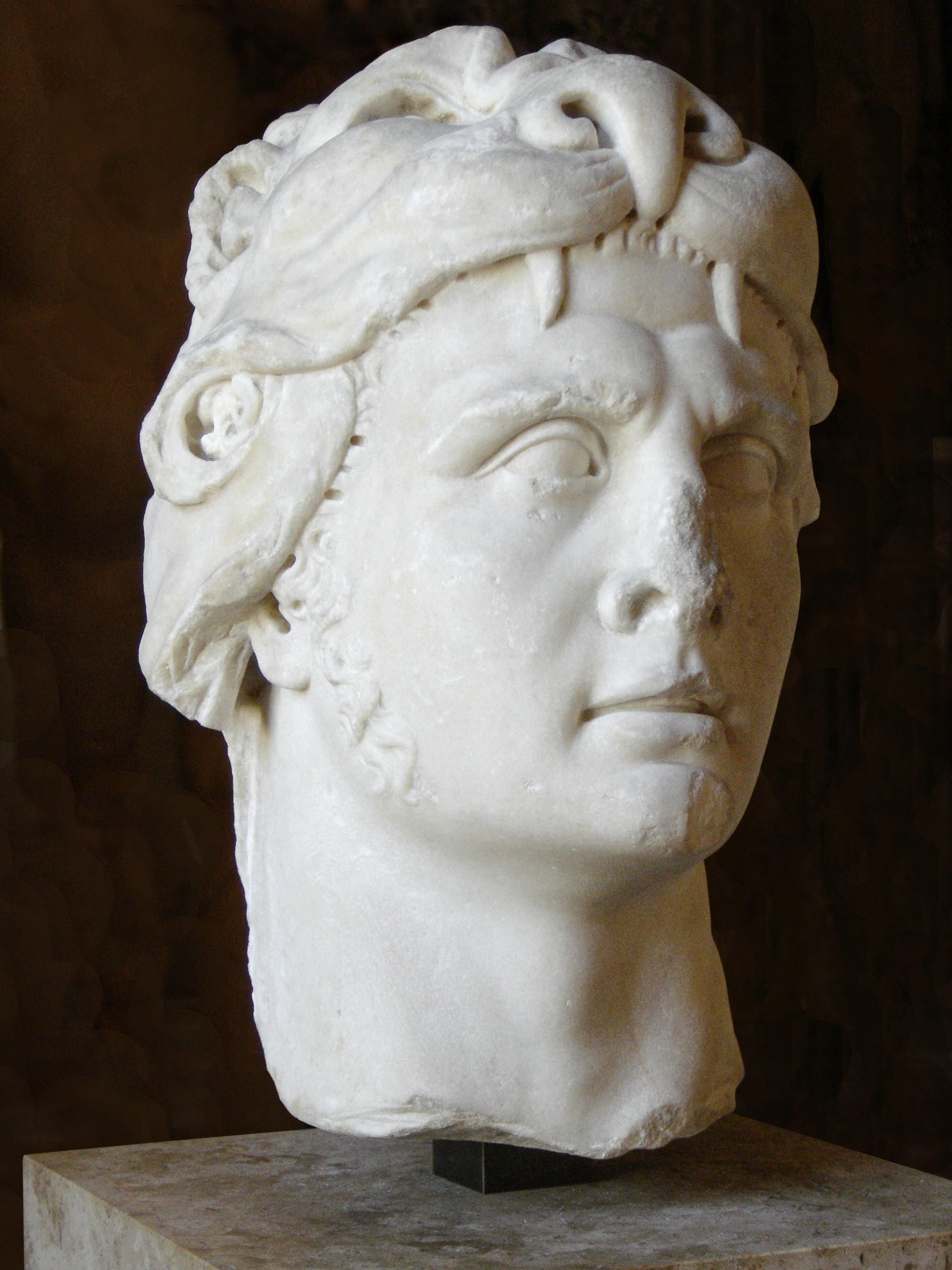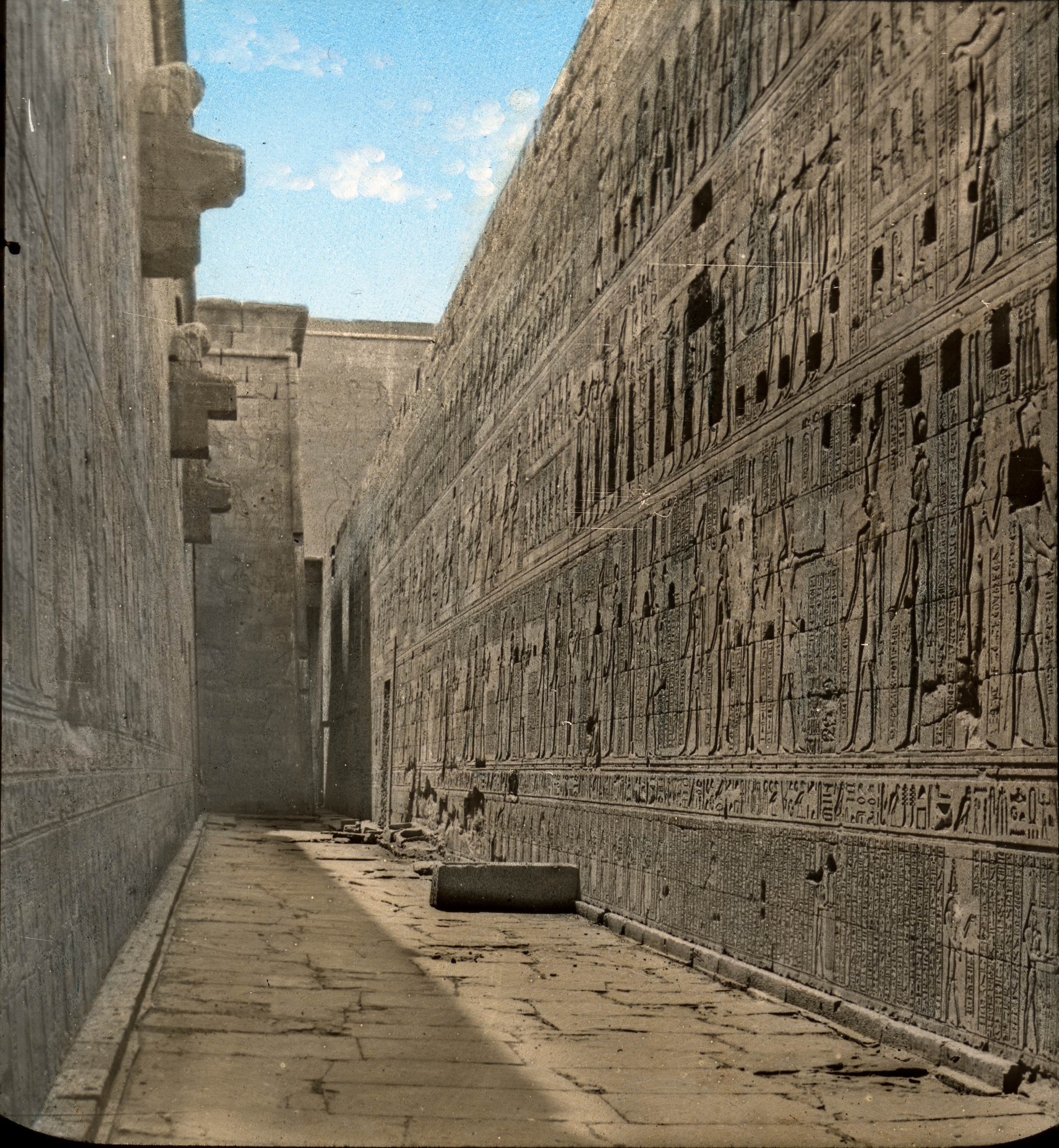|
Cleopatra V
Cleopatra V ( el, Κλεοπάτρα Τρύφαινα; died or ) was a Ptolemaic Queen of Egypt. She is the only surely attested wife of Ptolemy XII. Her only known child is Berenice IV, but she was also probably the mother of Cleopatra VII. It is unclear if she died around the time of Cleopatra VII's birth in 69 BC, or if it was her or a daughter named Cleopatra VI who co-ruled Ptolemaic Egypt with Berenice IV in 58–57 BC during the political exile of Ptolemy XII to Rome. No written records about Cleopatra V exist after 57 BC and two years later Berenice IV was overthrown by Ptolemy XII, his throne restored with Roman military aid. Descent and marriage Because of the poor body of source material Cleopatra V is a very obscure member of the Ptolemaic dynasty. Only a few ascertained facts about her are known. Many aspects of her life are the subject of controversial theories. In all known ancient sources she is given the byname ''Tryphaena''. She may have borne this name b ... [...More Info...] [...Related Items...] OR: [Wikipedia] [Google] [Baidu] |
Ptolemy XII Auletes
Ptolemy XII Neos Dionysus Philopator Philadelphus ( grc-gre, Πτολεμαῖος Νέος Διόνυσος Φιλοπάτωρ Φιλάδελφος, Ptolemaios Neos Dionysos Philopatōr Philadelphos; – 51 BC) was a pharaoh of the Ptolemaic Kingdom of Egypt who ruled from 80 to 58 BC and then again from 55 BC until his death in 51 BC. He was commonly known as Auletes (, "the Flautist"), referring to his love of playing the flute in Dionysian festivals. A member of the Ptolemaic dynasty, he was a descendant of its founder Ptolemy I Soter, a Macedonian Greek general and companion of Alexander the Great. writes about Ptolemy I Soter: "The Ptolemaic dynasty, of which Cleopatra was the last representative, was founded at the end of the fourth century BC. The Ptolemies were not of Egyptian extraction, but stemmed from Ptolemy Soter, a Macedonian Greek in the entourage of Alexander the Great."For additional sources that describe the Ptolemaic dynasty as " Macedonian Greek", ple ... [...More Info...] [...Related Items...] OR: [Wikipedia] [Google] [Baidu] |
Ptolemy XII
Ptolemy XII Neos Dionysus Philopator Philadelphus ( grc-gre, Πτολεμαῖος Νέος Διόνυσος Φιλοπάτωρ Φιλάδελφος, Ptolemaios Neos Dionysos Philopatōr Philadelphos; – 51 BC) was a pharaoh of the Ptolemaic Kingdom of Egypt who ruled from 80 to 58 BC and then again from 55 BC until his death in 51 BC. He was commonly known as Auletes (, "the Flautist"), referring to his love of playing the flute in Dionysian festivals. A member of the Ptolemaic dynasty, he was a descendant of its founder Ptolemy I Soter, a Macedonian Greek general and companion of Alexander the Great. writes about Ptolemy I Soter: "The Ptolemaic dynasty, of which Cleopatra was the last representative, was founded at the end of the fourth century BC. The Ptolemies were not of Egyptian extraction, but stemmed from Ptolemy Soter, a Macedonian Greek in the entourage of Alexander the Great."For additional sources that describe the Ptolemaic dynasty as " Macedonian Greek", please ... [...More Info...] [...Related Items...] OR: [Wikipedia] [Google] [Baidu] |
Cleopatra VII
Cleopatra VII Philopator ( grc-gre, Κλεοπάτρα Φιλοπάτωρ}, "Cleopatra the father-beloved"; 69 BC10 August 30 BC) was Queen of the Ptolemaic Kingdom of Egypt from 51 to 30 BC, and its last active ruler.She was also a diplomat, naval commander, linguist, and medical author; see and . A member of the Ptolemaic dynasty, she was a descendant of its founder Ptolemy I Soter, a Macedonian Greek general and companion of Alexander the Great. writes about Ptolemy I Soter: "The Ptolemaic dynasty, of which Cleopatra was the last representative, was founded at the end of the fourth century BC. The Ptolemies were not of Egyptian extraction, but stemmed from Ptolemy Soter, a Macedonian Greek in the entourage of Alexander the Great."For additional sources that describe the Ptolemaic dynasty as " Macedonian Greek", please see , , , and . Alternatively, describes them as a "Macedonian, Greek-speaking" dynasty. Other sources such as and describe the Ptolemies as ... [...More Info...] [...Related Items...] OR: [Wikipedia] [Google] [Baidu] |
Roman Republic
The Roman Republic ( la, Res publica Romana ) was a form of government of Rome and the era of the classical Roman civilization when it was run through public representation of the Roman people. Beginning with the overthrow of the Roman Kingdom (traditionally dated to 509 BC) and ending in 27 BC with the establishment of the Roman Empire, Rome's control rapidly expanded during this period—from the city's immediate surroundings to hegemony over the entire Mediterranean world. Roman society under the Republic was primarily a cultural mix of Latin and Etruscan societies, as well as of Sabine, Oscan, and Greek cultural elements, which is especially visible in the Roman Pantheon. Its political organization developed, at around the same time as direct democracy in Ancient Greece, with collective and annual magistracies, overseen by a senate. The top magistrates were the two consuls, who had an extensive range of executive, legislative, judicial, military, and religious po ... [...More Info...] [...Related Items...] OR: [Wikipedia] [Google] [Baidu] |
Wilhelm Dittenberger
Wilhelm (William) Dittenberger (August 31, 1840 in Heidelberg – December 29, 1906 in Halle (Saale)) was a German philologist in classical epigraphy. Life Wilhelm Dittenberger was the son of the Protestant theologian Wilhelm Theophor Dittenberger. After attending school in Heidelberg and Weimar (then directed by Hermann Sauppe), he studied classical philology at Jena from 1859 and transferred to Göttingen in 1861, where he was reunited with Hermann Sauppe and received his doctorate at the beginning of 1863 for a work on the Athenian ephebes. From autumn of that year, he taught at the Göttingen Gymnasium while he completed his habilitation on Sallust at the University of Göttingen. Initially, Dittenberger remained a schoolteacher, becoming a teacher at the Joachimsthalsches Gymnasium in Berlin in 1865, at the Rudolstadt Gymnasium from 1867, and at the gymnasium in Quedlinburg from 1873 to 1874. In 1874 he was appointed Professor of Classical Philology at the Martin Luther Univer ... [...More Info...] [...Related Items...] OR: [Wikipedia] [Google] [Baidu] |
Papyrus
Papyrus ( ) is a material similar to thick paper that was used in ancient times as a writing surface. It was made from the pith of the papyrus plant, '' Cyperus papyrus'', a wetland sedge. ''Papyrus'' (plural: ''papyri'') can also refer to a document written on sheets of such material, joined side by side and rolled up into a scroll, an early form of a book. Papyrus is first known to have been used in Egypt (at least as far back as the First Dynasty), as the papyrus plant was once abundant across the Nile Delta. It was also used throughout the Mediterranean region. Apart from a writing material, ancient Egyptians employed papyrus in the construction of other artifacts, such as reed boats, mats, rope, sandals, and baskets. History Papyrus was first manufactured in Egypt as far back as the fourth millennium BCE.H. Idris Bell and T.C. Skeat, 1935"Papyrus and its uses"(British Museum pamphlet). The earliest archaeological evidence of papyrus was excavated in 2012 and ... [...More Info...] [...Related Items...] OR: [Wikipedia] [Google] [Baidu] |
Re (Egyptian Religion)
Ra (; egy, rꜥ; also transliterated ; cuneiform: ''ri-a'' or ''ri-ia''; Phoenician: 𐤓𐤏, CIS I 3778 romanized: rʿ) or Re (; cop, ⲣⲏ, translit=Rē) was the ancient Egyptian deity of the sun. By the Fifth Dynasty, in the 25th and 24th centuries BC, he had become one of the most important gods in ancient Egyptian religion, identified primarily with the noon-day sun. Ra ruled in all parts of the created world: the sky, the earth, and the underworld. He was the god of the sun, order, kings and the sky. Ra was portrayed as a falcon and shared characteristics with the sky-god Horus. At times the two deities were merged as Ra-Horakhty, "''Ra, who is Horus of the Two Horizons''". In the New Kingdom, when the god Amun rose to prominence he was fused with Ra as Amun-Ra. The cult of the Mnevis bull, an embodiment of Ra, had its center in Heliopolis and there was a formal burial ground for the sacrificed bulls north of the city. All forms of life were beli ... [...More Info...] [...Related Items...] OR: [Wikipedia] [Google] [Baidu] |
Philae
; ar, فيلة; cop, ⲡⲓⲗⲁⲕ , alternate_name = , image = File:File, Asuán, Egipto, 2022-04-01, DD 93.jpg , alt = , caption = The temple of Isis from Philae at its current location on Agilkia Island in Lake Nasser , map_type = Egypt , map_alt = , map_size = , relief = , coordinates = , location = Aswan, Aswan Governorate, Egypt , region = Nubia , type = Sanctuary , part_of = , length = , width = , area = , height = , builder = Taharqa or Psamtik II , material = , built = 7th or 6th century BC , abandoned = 6th century AD , epochs = Third Intermediate Period or Late Period to Byzantine Empire , cultures = , dependency_of = , occupants = , event = , excavations = , archaeologists = , condition = , ownership = , management = , public_a ... [...More Info...] [...Related Items...] OR: [Wikipedia] [Google] [Baidu] |
Edfu
Edfu ( egy, bḥdt, ar, إدفو , ; also spelt Idfu, or in modern French as Edfou) is an Egyptian city, located on the west bank of the Nile River between Esna and Aswan, with a population of approximately sixty thousand people. Edfu is the site of the Ptolemaic Temple of Horus and an ancient settlement, Tell Edfu. About south of Edfu are remains of ancient pyramids. Ancient history Ancient Tell Edfu The remains of the ancient settlement of Edfu are situated about 50 m to the west of the Ptolemaic temple – to the left of the older temple pylon. This settlement is known as ''Wetjeset-hor'' and the Greek name was ''Apollinopolis Magna'' (Ancient Greek: ''Apollinòpolis'', ''Απολλινόπολις''). According to ''Notitia Dignitatum'', part of Legio II ''Traiana Fortis'' was camped in ''Apollo superior'', which was the Roman name for the town. Although unassuming and unglamorous to the visiting tourists, Tell Edfu is a monument that contains evidence of more Egypt ... [...More Info...] [...Related Items...] OR: [Wikipedia] [Google] [Baidu] |
Wilhelm Spiegelberg
Wilhelm Spiegelberg (25 June 1870, Hannover – 23 December 1930, Munich) was a German Egyptologist. He specialized in analyses of Demotic and hieratic text. Spiegelberg grew up as the second oldest of four brothers in a German Jewish family. He studied Egyptology and archaeology in Strasbourg and Berlin, obtaining his doctorate from the University of Strasbourg in 1891. As a student his influences included Johannes Dümichen, Adolf Michaelis and Adolf Erman. After graduation, he continued his education in Paris as a student of Gaston Maspero. In 1899 he became an associate professor at Strasbourg, where in 1907 he obtained a full professorship. In 1919 he relocated to the University of Heidelberg, and four years later succeeded Friedrich Wilhelm von Bissing as chair of Egyptology at the University of Munich.Wilhelm Spiegelberg @ NDB/ADB D ... [...More Info...] [...Related Items...] OR: [Wikipedia] [Google] [Baidu] |
Friedrich Preisigke
Friedrich Preisigke (14 February 1856 in Dessau – 8 February 1924 in Heidelberg) was a German Egyptologist and papyrologist. Life Born in Dessau, he attended the Cathedral gymnasium at Brandenburg an der Havel, later became a clerk in the German Post Office and in 1897 he was appointed director of the telegraph lines in Berlin. Although he had already launched a white collar career, his deep love for classical literature and ancient history led him to closely follow the lectures of great scholars of the time, such as the philologist Ulrich von Wilamowitz-Moellendorff, epigraphist Hermann Dessau and philologist Paul M. Meyer, by whom he was introduced to the study of papyrology. In 1903 Preisigke graduated from the University of Halle with a thesis supervised by the orientalist Ulrich Wilcken. In 1908 he became Director of Telegraphs in Strasbourg, and in 1913 was appointed professor at the Faculty of Philosophy of the University of Strasbourg. In June 1915 he was elected an ... [...More Info...] [...Related Items...] OR: [Wikipedia] [Google] [Baidu] |
Papyri
Papyrus ( ) is a material similar to thick paper that was used in ancient times as a writing surface. It was made from the pith of the papyrus plant, '' Cyperus papyrus'', a wetland sedge. ''Papyrus'' (plural: ''papyri'') can also refer to a document written on sheets of such material, joined side by side and rolled up into a scroll, an early form of a book. Papyrus is first known to have been used in Egypt (at least as far back as the First Dynasty), as the papyrus plant was once abundant across the Nile Delta. It was also used throughout the Mediterranean region. Apart from a writing material, ancient Egyptians employed papyrus in the construction of other artifacts, such as reed boats, mats, rope, sandals, and baskets. History Papyrus was first manufactured in Egypt as far back as the fourth millennium BCE.H. Idris Bell and T.C. Skeat, 1935"Papyrus and its uses"(British Museum pamphlet). The earliest archaeological evidence of papyrus was excavated in 2012 an ... [...More Info...] [...Related Items...] OR: [Wikipedia] [Google] [Baidu] |









